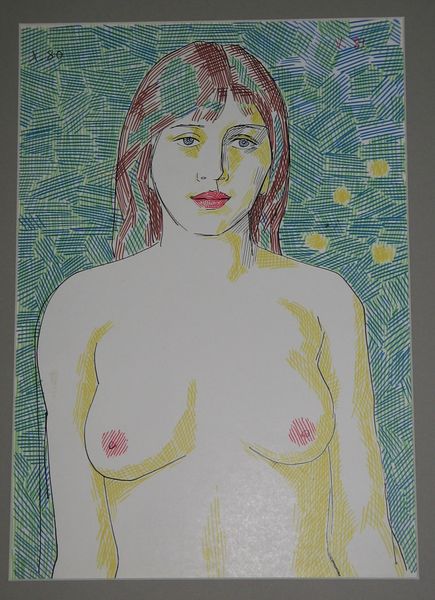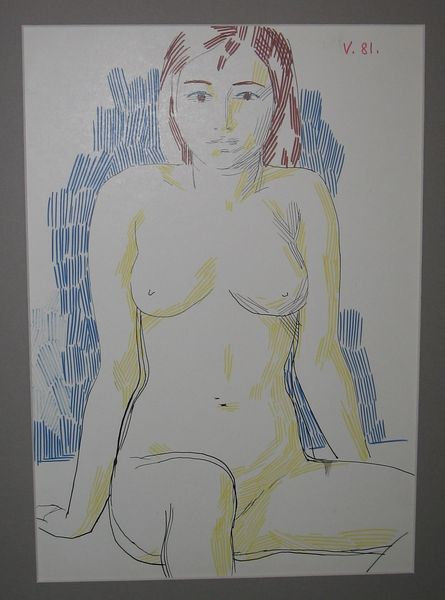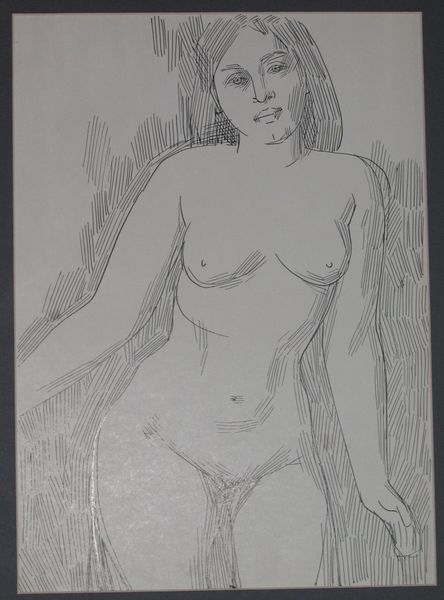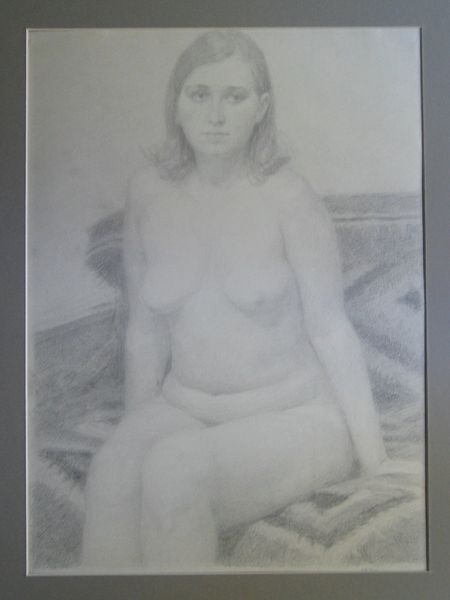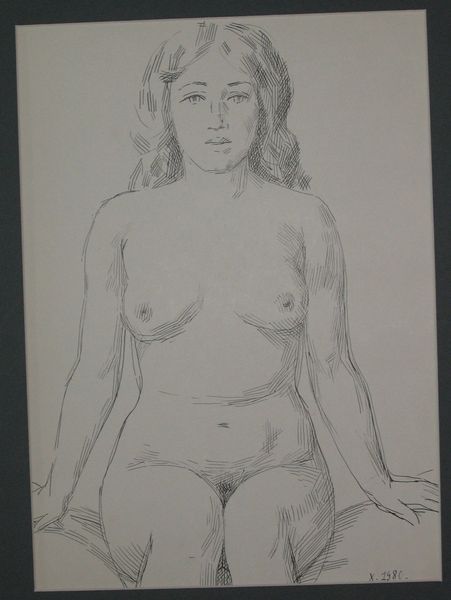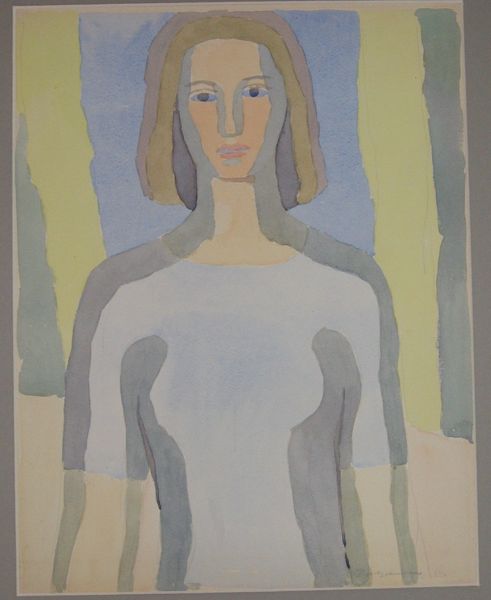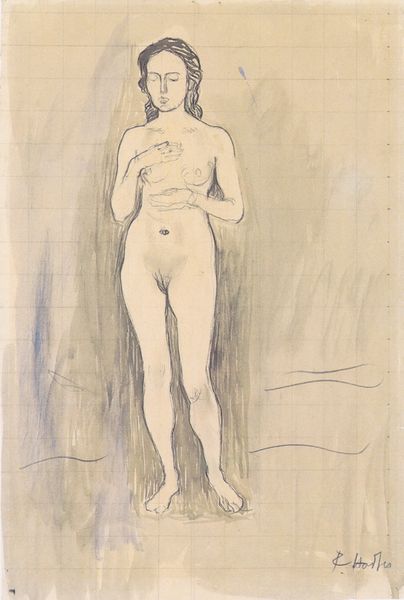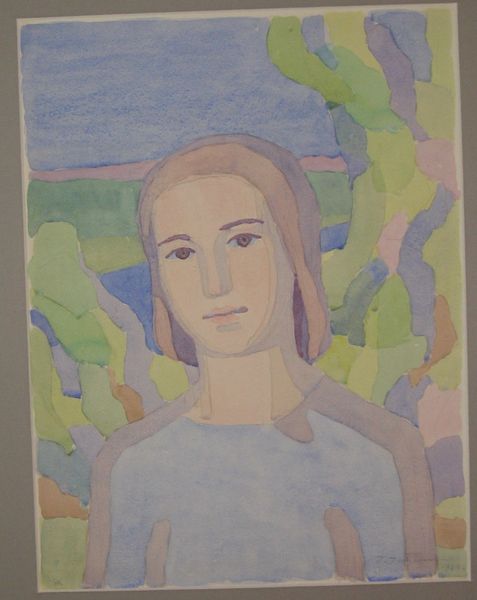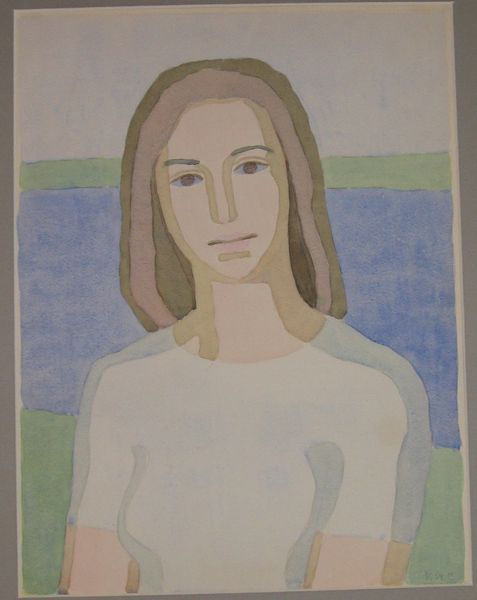
drawing, pencil
#
drawing
#
landscape
#
figuration
#
pencil
#
nude
Copyright: Hryhorii Havrylenko,Fair Use
Curator: Editor: This is "Standing Nude" by Hryhorii Havrylenko. It looks like it's made with pencil. There's something almost classical about the way she's standing against that hazy landscape, yet the execution feels very modern. What strikes you about it? Curator: The overt simplicity, perhaps bordering on crude, is interesting. Consider the tools: graphite and paper. Relatively inexpensive and accessible. What social class might these materials make the creation of art available to? Editor: I guess a broader one than, say, oil paints and canvas would? So are you suggesting the very *stuff* of art impacts who gets to make it? Curator: Precisely. Notice how the pencil marks are clearly visible. The *labor* isn't hidden; it's right there on the surface. Contrast that with academic painting where the artist strives to conceal their process. Does that affect your reading of the work? Editor: Definitely! It feels much more immediate, honest almost. Less…precious, maybe. And it seems to celebrate drawing, not hide it as preparation for something “better”. The materiality argues against a hierarchy of art forms. It democratizes it. Curator: Good point. Now, imagine if this nude were rendered in marble... How would the perceived social message change with the shift in material? Editor: A marble nude screams wealth and classical training… maybe even power. The pencil seems to suggest vulnerability, or at least less access to conventional routes of artistic power. It really is interesting how much the simple materials change the whole conversation around the work. Curator: Absolutely! Now, let’s ponder the socio-political context of figuration under various governments. A topic for another time, but something to always keep in mind. Editor: Thanks, that gave me a lot to think about! The way the materiality and labor come together makes me see it completely differently now.
Comments
No comments
Be the first to comment and join the conversation on the ultimate creative platform.
